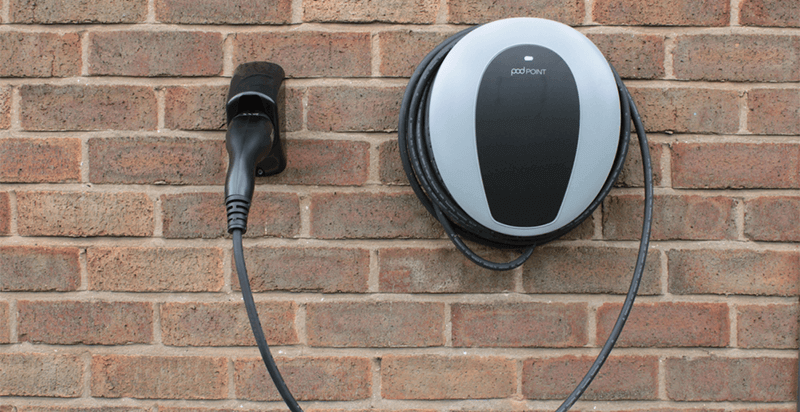In the push for a sustainable future, more and more Australians are choosing electric vehicles (EVs). With petrol prices on the rise, plug-in cars look more attractive than ever. If you’re considering going electric, you should understand a few things about home charging — namely how it works and how much it costs. This Canstar Blue guide will walk you through everything you need to know about charging your brand-new Tesla at home.
On this page:
EV charging station home installation levels
There are three basic charging speeds, or levels, for electric vehicles. These are Level 1 (slow), Level 2 (medium) and Level 3 (fast). Charging times can vary between 30 minutes and 24 hours, depending on the power source. An electric car charged in under an hour at a public fast-charging station may take up to 20 hours to charge at home. EV charging levels are shown below.
Level 1 EV charging
This is the slowest EV charging method. It uses a standard power cable plugged into a wall outlet to generate just 2kW. If a typical EV has a 40 kilowatt hour (kWh) battery, it will take about 20 hours to charge. Level 1 charging is best for hybrid vehicles or infrequent drivers.
Level 2 EV charging
Level 2 is a step up from Level 1, using a wall-mounted unit to produce between and 22kW. Also known as ‘home chargers’, these units are installed by an electrician and charge your EV overnight. Using the 40kWh battery example, a Level 2 charger running 7kW would take about 5.7 hours to charge an electric car.
Level 3 EV charging
Level 3 chargers are the fastest method of powering your EV. These chargers can deliver 50kW+ an hour, meaning most EVs would be charged in less than an hour. Most Level 3 chargers can only be found at EV public charging stations due to their higher price tag.
Electric car battery range
So, how far will you get on a charge? Regardless of the charger level, a full battery is a full battery. Charge method will not affect your range, but other factors may, including:
- EV model (battery type)
- Battery size
- EV type (hybrid etc.)
- Battery condition
- Road conditions
- A/C use
Electric vehicles in Australia can travel 200km to 652km on a single charge. While most Australians could commute to work and drive around the city comfortably with that range, it’s still a good idea to check the battery range in advance.

Home EV charging station price
There are two costs to consider for electric vehicles — installation and energy usage. Here’s a closer look at what you can expect to pay to charge your electric car.
EV installation costs
When it comes to EVs, the faster the charge, the more you’ll pay. You’re not only paying for convenience — you’re paying for more power.
Here are the estimated installation costs for each level:
- Level 1: No installation costs.
- Level 2: $1,000 to $3,000.
- Level 3: $20,000 to $30,000.
Keep in mind that some EV retailers include free Level 2 home charger installation when you purchase directly through them. Investing in a Level 3 fast charger is not always necessary since overnight charging is usually sufficient.
EV energy usage costs
Like installation prices, electricity usage costs increase with charging speed. That said, even the fastest EV charger is still considerably cheaper than petrol prices. As petrol prices continue to rise, electric vehicles offer considerable savings.
Here’s an idea of the energy usage costs to charge a standard 40kWh electric car:
- Level 1: $0.15 per kWh, or $6 for a full charge.
- Level 2: $0.20 per kWh, or $8 for a full charge.
- Level 3: $0.30 per kWh, or $12 for a full charge.
Based on these estimates, an EV charged with a Level 2 home charger may consume approximately 15kW and cost around $3 per 100km. If you’ve got solar panels, this figure is even less. To put this into context, a petrol car requires around 10 litres of fuel to travel the same distance.
How to set up an EV charging station at home
EV charging stations can’t be set up by the average Joe. Installation is best left to the experts — authorised electricians who can safely and properly install your unit. You can, however, prepare your home for installation by following a few simple steps.
1. Choose a location
There’s more to choosing a location than putting it in your garage. You need to consider how you use your car and, more specifically, whether you drive or reverse park. You’ll want your carport on the most convenient side of your garage or carport. Ensure that area is cleared in advance to speed up the installation process.
2. Determine your connection
Get an idea of how fast your EV will charge by determining whether you have a single-phase or three-phase connection. Three-phase connections will charge your EV faster. Identify the type of connection in your house by measuring the width of the main switch — three-phase switches are about three finger-widths wide.
3. Consider renewable energy
A solar system with a battery can generate energy and store it at night. In addition to reducing your electricity bill, solar systems can charge your electric vehicle. Do the math and figure out how long it would take you to break even on a solar investment.
4. Talk to your body corporate
Living in an apartment doesn’t mean you can’t have an EV charger. Find out if your strata or body corporate has a policy regarding EV installation.
5. Compare installation costs
If you’re purchasing an electric car second-hand, you’ll need to install a home charger with the help of an electrician. Compare multiple electricians and brands before making a decision.
Home EV electricity plans
It is much cheaper to charge your car than to buy petrol. With a dedicated electric car plan, your power bill could be even more affordable.
A dedicated EV plan aims to reduce how much you pay to charge your EV by offering a cheaper electricity usage rate during the night. This is not common among Australian power providers — only a handful of electric car plans offer this benefit.
Remember that just because your overnight rates are lower doesn’t mean you’ll pay less for electricity overall. Make sure you check the fine print and understand the peak usage and supply rates before locking into a contract.
Other home electricity plans compared
Here are some of the cheapest published deals from the retailers on our database that include a link to the retailer’s website for further details. These are products from referral partners†. These costs are based on the Ausgrid network in Sydney but prices may vary depending on your circumstances. This comparison assumes general energy usage of 3900kWh/year for a residential customer on a single rate tariff. Please use our comparison tool for a specific comparison in your area. Our database may not cover all deals in your area. As always, check all details of any plan directly with the retailer before making a purchase decision.
Here are some of the cheapest published deals from the retailers on our database that include a link to the retailer’s website for further details. These are products from referral partners†. These costs are based on the Citipower network in Melbourne but prices may vary depending on your circumstances. This comparison assumes general energy usage of 4000kWh/year for a residential customer on a single rate tariff. Please use our comparison tool for a specific comparison in your area. Our database may not cover all deals in your area. As always, check all details of any plan directly with the retailer before making a purchase decision.
Here are some of the cheapest published deals from the retailers on our database that include a link to the retailer’s website for further details. These are products from referral partners†. These costs are based on the Energex network in Brisbane but prices may vary depending on your circumstances. This comparison assumes general energy usage of 4600kWh/year for a residential customer on a single rate tariff. Please use our comparison tool for a specific comparison in your area. Our database may not cover all deals in your area. As always, check all details of any plan directly with the retailer before making a purchase decision.
Here are some of the cheapest published deals from the retailers on our database that include a link to the retailer’s website for further details. These are products from referral partners†. These costs are based on the SA Power network in Adelaide but prices may vary depending on your circumstances. This comparison assumes general energy usage of 4000kWh/year for a residential customer on a single rate tariff. Please use our comparison tool for a specific comparison in your area. Our database may not cover all deals in your area. As always, check all details of any plan directly with the retailer before making a purchase decision.



Share this article